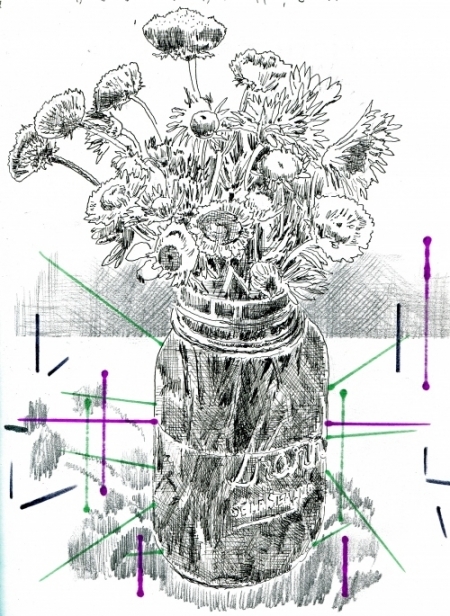I went on an artist's date today. An artist's date is a concept from Julia Cameron's Artist's Way, a runaway bestseller that promotes, among other nurturing practices for artists' block or insecure artist syndrome, the taking of a couple of hours for oneself, alone, to be inspired and re-filled when the cup hath run dry. The idea is that during an artist's date, simply spending time visiting an art gallery or museum, or walking in the forest, or eating brunch at a cute diner with only your sketchbook for company, provides inspiration and self soothing that is often missing in one's busy life.
This is exactly what I did today, when I visited Portland's wonderful Museum of Contemporary Craft to see the Betty Feves exhibit. Betty Feves(1918-1985) was a pioneering modernist ceramicist living and working in the Pendleton area of Eastern Oregon. Her use of local clays, colors and monumental landscape forms put her at the forefront of the "think globally, act locally movement" that has morphed into the regionalism that is all the rage in nearly every art media today. Her humble persona as a farmer's daughter and a working mom is appealing and down-to-earth, but it is her mastery over form, color and texture that make her a giant in the world of modern ceramics. Some of her works are lighthearted, almost humorous, with big faces and a clash of textures that make one smile. Much of the work is so large and muscular it feels as if it were forced up through the ground by a seismic event. Namita Gupta Wiggers, the museum's curator and now, Director, has done a marvelous job of elucidating Ms. Feves' artistic process and personal voice, as described in an informative article in Oregon Arts Watch. My artist's date was a huge success.I feel inspired, moved to make work that is truly me, as Betty Feves insisted upon throughout her career. Fortunately The Contemporary Crafts Museum on the Park Blocks in Portland's Pearl District will be open through July 28. Please go!








































